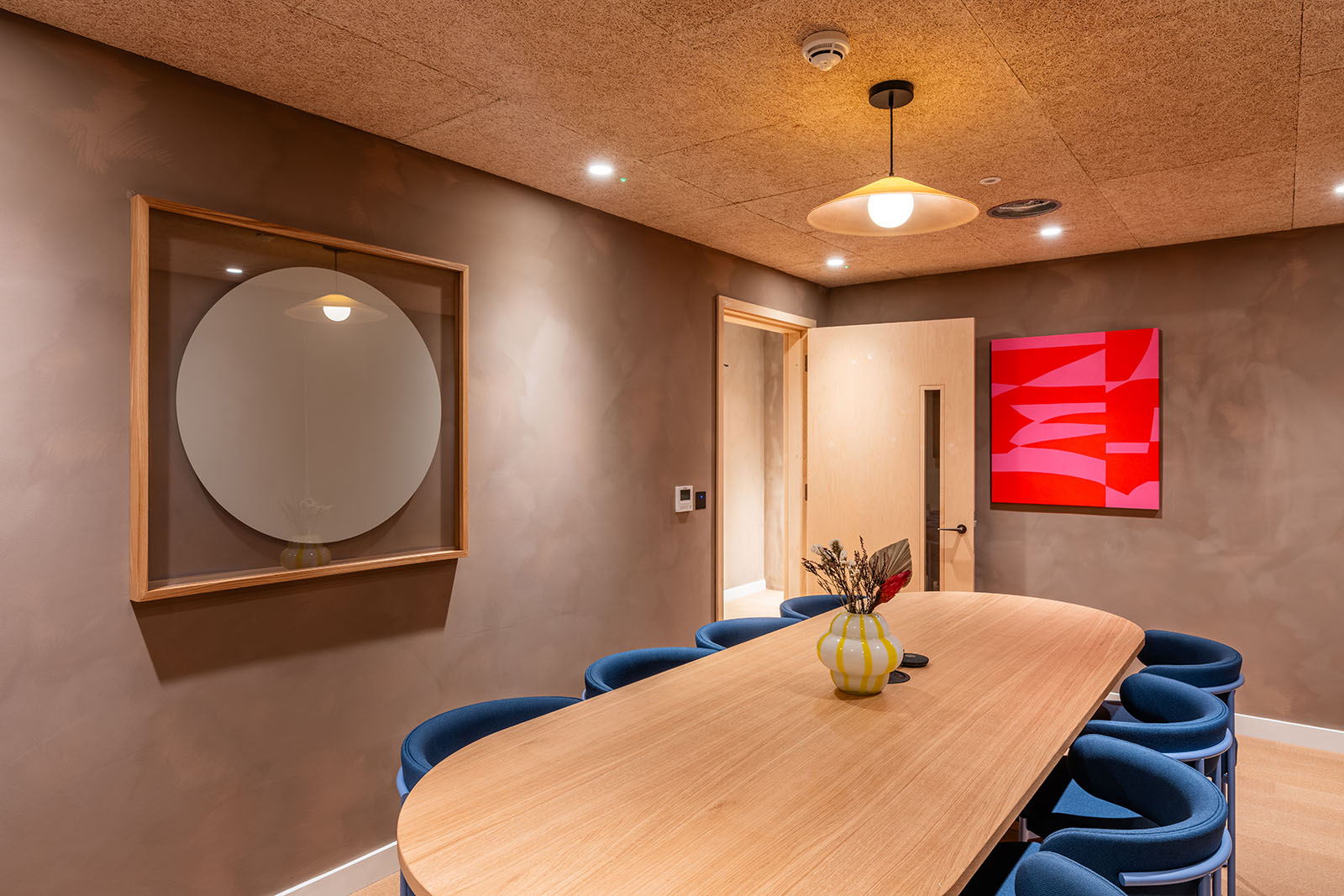Enhancing energy efficiency and market access: the SKArating-ETL alliance
Supporting energy efficient choices through aligned standards
At the ETL, we take pride in setting the benchmark for energy efficiency, which is why we’re pleased to collaborate with the SKArating scheme. This collaboration helps raise energy efficiency standards across the industry, giving manufacturers that meet ETL criteria access to purchasers working on SKArating-certified projects. By aligning with ETL benchmarks, SKArating ensures sustainable building products meet robust energy efficiency standards, driving progress across the built environment.
Understanding the SKArating scheme
The SKArating scheme is a widely recognised benchmark for assessing the environmental impact of non-domestic building fit outs. Originally developed by the Royal Institution of Chartered Surveyors (RICS), it is now operated by SKA Rating Ltd — a not-for-profit company led by members of the scheme’s technical committee. The scheme covers three key areas: offices, higher education, and retail properties. It helps landlords and tenants evaluate interior fit-out projects against defined sustainability best practices, ensuring alignment with leading environmental standards across the industry.
With an estimated 11% of UK construction spending dedicated to fit-outs—and buildings undergoing 30 to 40 fit outs over their lifetime, according to SKArating—the potential for sustainability improvements in this sector is substantial.
The impact of interior fitouts is often underestimated, but their frequency and carbon footprint quickly add up. As Elina Grigoriou, chair of the SKArating Board explains:
“Interior fitouts happen daily and at a much faster pace and frequency than whole building projects, making the impact proportional. Data derived from whole life carbon modelling happening to align SKArating with Net Zero alignment, shows that the whole building impacts are nearly equalled after 4-5 interior fitout changes of each space.
By using our scheme, stakeholders can ensure performance of spaces is driven to the latest standards, including the ETL benchmarked technologies which we have used since the scheme’s inception in 2008.”
By embedding sustainability into fit-out decisions, SKArating plays a crucial role in reducing buildings' long-term environmental footprint while optimising construction investment. It offers designers and industry professionals an objective, practical framework for integrating sustainability into their projects.


Thirty One Alfred Place, a recent SKArating assessed office developed and delivered by GPE
How SKA and the ETL work together to drive sustainability
SKArating relies on ETL criteria to benchmark technologies, making the ETL a key entry point for manufacturers aiming to have their products recognised under SKArating. This alignment supports specifiers, architects, and designers across sectors — from commercial retrofits to offices and educational buildings.
For purchasers, this collaboration makes it easier to find energy efficient solutions that meet rigorous sustainability standards. And for manufacturers that meet ETL criteria, it increases visibility and improves the chances of their products being chosen for SKArating projects.
A closer look: ETL categories used in SKArating
The SKArating scheme evaluates energy performance in office, retail, and higher education fit outs, including laboratories and restaurants, incorporating a range of ETL-listed technologies. These include Lighting, Heating, Ventilation, and Air-Conditioning (HVAC) Equipment, Heat Pumps, Heat Recovery Ventilation Units, Pipework Insulation, Tank and Vessel Insulation, Radiant and Warm Air Heaters, and Refrigeration Equipment.
These ETL-listed technologies play a crucial role in SKArating assessments, providing manufacturers with qualifying products greater visibility and increased opportunities for selection in sustainable fit-out projects. SKArating case studies have shown over the years a 25% operating energy reduction year-on-year between pre-refurbishment and post refurbishment that is based on the SKArating and ETL benchmarks. Each space differs in scope and so reductions vary with the performance and decisions by the design and client teams, but the effectiveness of the schemes together give clients big value returns in operation.
What this means for manufacturers
1. Market access
Only products that meet ETL criteria can be positioned within the SKArating framework. That means manufacturers benefit from increased exposure to purchasers who prioritise energy efficient choices.
2. Competitive advantage
As one of the world’s largest databases of energy-efficient products — typically within the top 25% in their category — an ETL listing helps manufacturers stand out. Government-backed and independently verified, ETL listings ensure trust and help counter concerns around greenwashing.
3. Purchaser visibility
Because SKArating uses ETL criteria, listed products automatically meet its efficiency requirements. This provides a more direct route to market and helps specifiers easily identify compliant technologies. Manufacturers also benefit from the ETL’s marketing efforts — including pay-per-click campaigns, newsletters, and industry event promotion — helping raise the profile of listed products.
To register your product and join the growing list of energy efficient technologies on the ETL, click here.
Shaping the future of energy efficient buildings
The collaboration between SKArating and the ETL reflects our shared focus on advancing sustainable technologies and green building practices. Several updates are in progress: SKArating’s Office scheme is set for publication in July with a public consultation of the proposed scheme in May. It is including a major uplift to the scheme and to bring it in line with the system’s strategic aims of Net Zero alignment and 100% Circularity. A similar major Higher Education scheme enhancement is due to go live late in November / early December. The Retail scheme update is scheduled for Spring 2026 and will introduce the new sustainability metrics tailored to retail and restaurant environments.
Meanwhile, the ETL continues to collaborate with organisations like Eurovent and Uniclass | NBS to encourage broader adoption of energy efficiency standards across the construction and building industries.to encourage broader adoption of energy efficiency standards across the construction and building industries.
Building a sustainable tomorrow, together
This ongoing collaboration reinforces the role both organisations play in shaping a more sustainable future. By listing with the ETL, manufacturers not only meet SKArating’s efficiency requirements, but they also align with an industry-wide push for credible, verifiable sustainability.
For manufacturers aiming to stay ahead in a changing market, the ETL–SKArating collaboration offers a valuable way to be seen, selected, and trusted; all while contributing to a more sustainable built environment.
For a full breakdown of SKArating and their role in sustainable built environment certifications, visit their website.
Find out more: Want to learn more about how the ETL supports energy efficiency? Read our case studies.
Don’t miss an update: Get energy efficiency news, product insights, and ETL updates delivered straight to your inbox. Sign up for the ETL newsletter.
Looking for energy efficient products? If you're a purchaser, browse the ETL list of verified technologies to find solutions that meet high efficiency standards.
Ready to apply? Find a step-by-step guide to the application process here.
Explore more on YouTube: Subscribe to The Energy Technology List channel for updates and insights on energy efficiency.
Get in touch: Questions? Reach out to us at info@etl.energysecurity.gov.uk to explore how the ETL can help bring your product closer to net zero.
